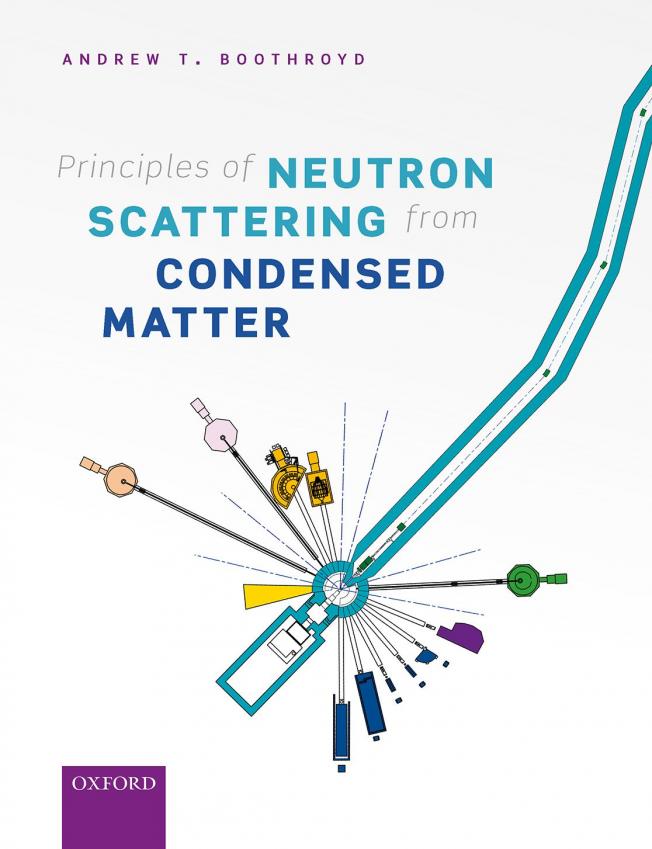Mapping spin-wave dispersions in stripe-ordered La2-x Srx Ni O4 (x=0.275, 0.333)
Physical Review B Condensed Matter and Materials Physics 72:6 (2005)
Abstract:
Using the MAPS spectrometer at the ISIS spallation source, we have measured the magnetic excitations of single-crystal samples of stripe-ordered La2-x Srx Ni O4 with x=0.333 and 0.275. The full two-dimensional spin-wave dispersions were obtained using incident energies of 60 and 160 meV. To analyze the excitations, we have evaluated a spin-only Hamiltonian describing diagonal, site-centered stripes in the linear spin-wave approximation. Besides the superexchange energy J within antiferromagnetic domains, we have considered effective exchange couplings J1 and J2 across a charge stripe coupling second-neighbor Ni sites along Ni-O bond directions and along the plaquette diagonal, respectively. From least-squares fits of the model to the measurements on the x=1/3 sample at T=10 K, we find that the dispersions are well described by a model using just J and J1, but not J and J2. Consistent with an analysis of previous measurements, we find that J is about 90% of the superexchange energy of undoped La2 Ni O4 and J1/J 0.5. The excitations observed for x=0.275 are surprisingly similar to those for x=1/3, despite the differing magnetic-ordering wave vectors; the main difference is a broadening of the excitations for x=0.275. For both samples, we find that one spin-wave branch has a gap of ∼20 meV, confirming a previous observation for x=1/3. We discuss the possible origin of this gap. © 2005 The American Physical Society.Orbital bi-stripes in highly doped bilayer manganites
Physical Review B - Condensed Matter and Materials Physics 72:6 (2005)
Abstract:
We present high-resolution high-energy and resonant x-ray-diffraction results from La2-2xSr1+2xMn2O7 for x=0.55, 0.575, and 0.60. These compounds show superlattice reflections at wave vectors of (h±δ,k±δ, l) and (h±2δ,k±2δ,l), arising from orbital ordering with associated Jahn-Teller distortions and charge ordering, respectively. We observe a phase transition boundary between the x=0.55 and x=0.575 doping levels. Samples with x=0.55 display structural characteristics similar to those previously reported for x=0.5. Compared to this the long-range order in samples with x=0.55 and x=0.6 have a distinct change in wave-vector and correlation length. We attribute this to a new orbital bi-stripe phase, accompanied by weak, frustrated, charge ordering. The observed azimuthal dependence of the orbital order reflection supports the model proposed for this new phase. © 2005 The American Physical Society.Charge stripe glasses in La2-x Srx NiO4 for 0.20 < x < 0.25
European Physical Journal B 46:1 (2005) 27-32
Abstract:
We present high resolution X-ray measurements characterising the charge stripe order state in the La2-xSrxNiO4 system with x = 0.20, 0.225 and 0.25. We find that in the x = 0.20, 0.225 and 0.25 systems the charge stripe order exists in a charge stripe glass characterised by weak, poorly correlated incommensurate charge stripes in contrast to the strong well correlated charge stripes in the commensurate x = 1/3 system. No stabilisation of the charge order was observed at the next possible commensurate value of ε= 0.25. A comparison with high energy X-ray measurements suggested that the charge order may exist in a charge stripe glass in the bulk in the doping region x = 0.20 - 0.33. Finally at low temperature there was an initial increase in the intensity and correlation not observed with neutron measurements and it appears to be an effect that X-rays are sensitive to but neutrons are not. © EDP Sciences, Società Italiana di Fisica/Springer-Verlag 2005.Optical conductivity and charge ordering in NaxCoO2
Physical Review B - Condensed Matter and Materials Physics 72:2 (2005)
Abstract:
The infrared conductivity σ(ω) of NaxCoO2 is studied as a function of doping and temperature for 0.5≤x≤1. A far-infrared peak (FIP) in σ(ω), which coexists with a small Drude contribution, indicates charge localization in the CoO2 layers. Long-range ordering at x=0.5 is confirmed to create a far-infrared gap, in addition to the FIP. At low T and high incommensurate x values, in correspondence with the reported formation of a spin-density wave, the FIP abruptly shifts to higher energy, indicating a deepening of the localizing potential. An analysis of the in-plane E1u phonon lifetime shows that Na+ ions lattice is "frozen in" at any T<295K for commensurate x and at T150K for incommensurate x. A comparison with the behavior of the FIP suggests that the Na+ "freezing" induces carrier localization only for low charge density and high Na+ concentration. © 2005 The American Physical Society.Patterning of sodium ions and the control of electrons in sodium cobaltate
(2005)


